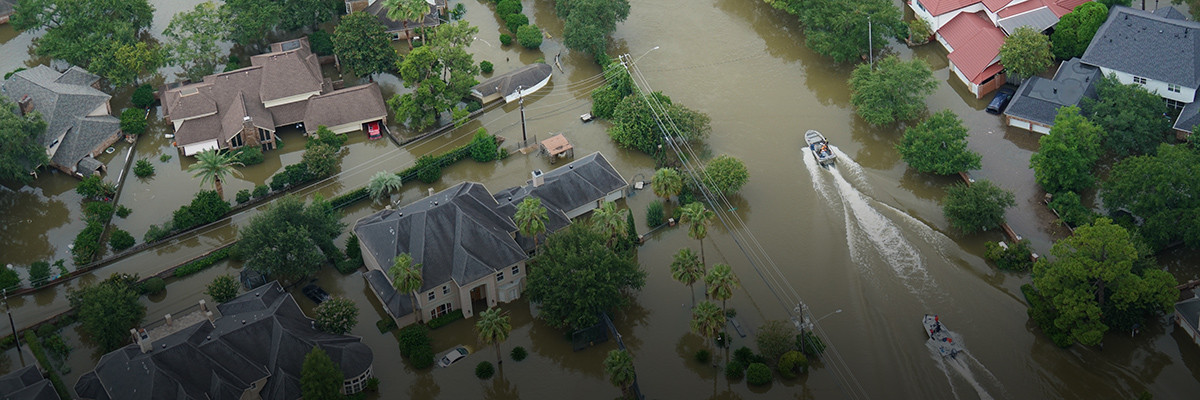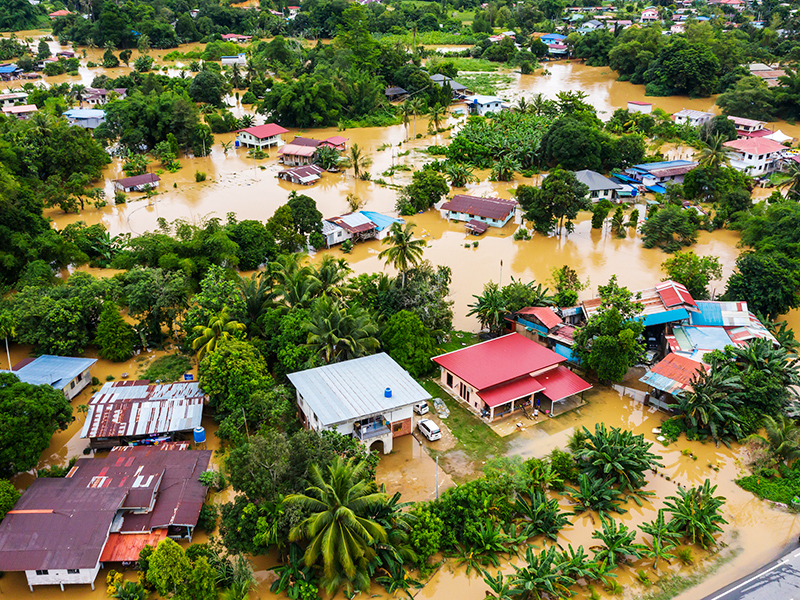
Around the world, we are experiencing record-breaking extreme weather events—from monsoon flooding in South Asia, to Hurricanes Harvey and Irma the United States and Caribbean islands, severe flooding in Nigeria, and Typhoon Hato here in Hong Kong and southern China. The loss of life, displacement, and financial damage are devastating.
While seasonal storms are nothing new, climate change is expected to make them more powerful. Warmer temperatures elicit more rainfall, and storm surge is worsened by sea-level rise. When combined with, in some cases, poor urban planning, existing socioeconomic vulnerabilities, and lack of preparation, these stronger storms can cause significant damage.
The recent and ongoing events illustrate for many of us the very real impacts of climate change. This begs the question: are those of us who work in or for the private sector doing everything we can to prepare for and build resilience to future weather- and climate-related impacts?
The private sector faces a range of climate risks that can affect overarching strategies, finances, human resources, and sales. And businesses are exposed to these risks throughout their operations, supply chains, and communities where they work. Companies rely on suppliers and communities around the world for both human and natural capital including land, water, and a consistent energy supply, among other critical resources. Simply put, the range of impacts from climate change can directly affect business continuity.
Catastrophic weather events or natural disasters can serve as “trigger events”—prompting (rightfully) an uptick in support from governments, businesses, and communities to aid relief and recovery efforts and “build back better” homes, schools, and roadways. But preparation can dramatically reduce the cost of recovery—studies show that for every US$1 spent to mitigate risks, US$4 is saved on recovery costs. We are not seeing the same level of investment or urgency to proactively prepare for extreme weather events and build climate resilience as we see for recovery.
As Alice Hill of U.S. President Obama’s National Security Council recently lamented, it took eight years and the destruction of Hurricane Sandy to agree on federal building standards to protect against floods. Despite this, President Trump revoked the flood protection rule 10 days before Harvey made landfall.
While “trigger events” can drive us to act, the implications of climate change for business go beyond extreme weather. Gradual, slow-onset climate events—sea-level rise, increasing temperatures, ocean acidification, glacial retreat and related impacts, salinization, land and forest degradation, loss of biodiversity, and desertification—are also affecting business in myriad ways.
For example, salinization, brought on by sea-level rise, is shrinking rice yields in Vietnam, Bangladesh, and other major rice-producing markets, which in turn affects global commodity supply chains and threatens food security. Salinity can also cause structural damage to buildings, equipment, and roads, which can impact the production and transport of goods and services.
To build their resilience to salinization, businesses can protect or install a combination of green and gray infrastructure: wetlands and forests act as natural barriers, and drainage systems and subsurface barriers can stop the flow of contaminants. In the agriculture industry, farmers can diversify crops and livelihoods to help maintain or build financial security; investments in new research could help uncover alternative solutions such as salt-tolerant crops.
Given that we’re experiencing the impacts of climate change today, it’s important that we invest in climate resilience. Here are three ways businesses can start building their adaptive capacities:
- Assess and disclose climate risk: In addition to assessing both gradual and sudden climate hazards, businesses should take inventory of their exposure and vulnerability throughout their operations, supply chains, and communities. Poor infrastructure and communication channels, existing labor issues, low-income communities, and social injustices are a few examples of vulnerabilities that can exacerbate climate risk. Disclosing risks can help companies generate awareness of issues, facilitate goal-setting for risk mitigation, and identify opportunities to collaboratively address challenges.
- Leverage expertise: Businesses should consider leveraging their knowledge and skills to build resilience throughout their value chains. For example, real estate developers can partner with city planners to solve for local vulnerabilities, such as planting trees to provide shade in hot environments and investing in safe and secure infrastructure like permeable pavers to reduce flooding.
- Empower individuals: Companies can up-level their civic engagement by empowering individuals to build personal resilience to climate change. For example, information and communications technology and financial services companies can collaborate with local governments to expand access to information and insurance for at-risk populations, including women, people with disabilities, the elderly, poor, homeless, and outdoor workers, among others.
As affected communities assess the damage brought on by the recent extreme weather events and work together to heal and recover, let’s take action within the businesses where we work. Let’s ask ourselves how we can make sure our companies and our communities are prepared.
With thoughtful, proactive, and collaborative efforts, we can build the resilience that’s essential for today’s climate reality. Learn more and get your business involved on our climate change page.
BSR’s latest sustainability insights and events straight to your inbox.
Topics
Let’s talk about how BSR can help you to transform your business and achieve your sustainability goals.








